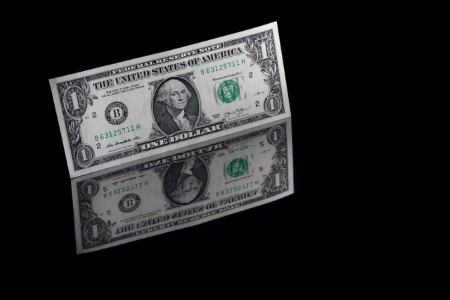




Philippines Trade Update: Trade trajectories trend along
 DOWNLOAD
DOWNLOAD

Policy Rate Updates: Double cut finale
 DOWNLOAD
DOWNLOAD

Monthly Economic Update: One for the road
 DOWNLOAD
DOWNLOAD


US yields rise amid increased Treasury supply, still-imminent Gaza attack

NEW YORK, Oct 16 – Treasury yields edged higher on Monday as investors grapple with how bonds should be priced in a changing market dynamic that includes increased US government debt issuance with an Israeli ground offensive in Gaza still imminent.
As investors keep an eye on the Middle East, they are trying to better gauge Federal Reserve efforts to curb high inflation with what should be the term premium for interest rates – what investors expect to be compensated for lending longer-term.
A significant increase in government and deficit spending that needs to be financed is part of a new environment that will not change in the foreseeable future, said Kevin Flanagan, head of fixed income strategy at WisdomTree in New York.
“Government spending is entrenched and baseline trillion-dollar deficits are now the norm for the next few years. So what got us here isn’t going to reverse I don’t think any time soon,” he said.
“When you put a lot of this together, it helps explain why Treasury yields almost all across the curve are at or could be soon approaching 5%.”
The yield on 10-year Treasury notes rose 7.7 basis points to 4.706%, while the two-year’s yield, which reflects interest rate expectations, was up 3.8 basis points at 5.092%.
The difference between yields on two- and 10-year Treasuries, seen as a recession harbinger when shorter-term notes yield more than those with longer-dated maturities in what is known as an inverted yield curve, was at -38.8 basis points.
Diplomatic efforts to arrange a ceasefire to let aid reach the besieged Gaza Strip failed on Monday, and Israel ordered the evacuation of villages in a strip of territory near its border with Lebanon, raising fears the war could spread to a new front.
Increased Treasury supply, the acknowledgment that the Fed will keep rates higher for longer and the fact the stock market is performing well are pushing yields higher, said Will Compernolle, macro strategist at FHN Financial in New York.
“Those risky assets are staying pretty steady even in the face of higher returns on bonds,” he said. “The idea of a 5% yield sounds really good but no one wants to add duration to their balance sheet even if a bank has cash to buy more bonds.”
The Treasury sold USD 75 billion in 13-week bills at a high rate of 5.34% and USD 68 billion in 26-week bills at a high rate of 5.335%. Another USD 75 billion in 42-day bills is scheduled to be sold on Tuesday.
The Treasury is slated to auction USD 13 billion in 20-year bonds on Wednesday and USD 22 billion in five-year Treasury Inflation-Protected Securities, or TIPS, on Thursday.
The yield on the 30-year Treasury bond rose 8.3 basis points at 4.862%.
The breakeven rate on five-year US TIPS was last at 2.309%.
The 10-year TIPS breakeven rate was last at 2.372%, indicating the market sees inflation averaging about 2.4% a year for the next decade.
Oct. 16 Monday 2:37 p.m. New York / 1837 GMT
| Price | Current Yield % | Net Change (bps) | |
| Three-month bills | 5.3375 | 5.4965 | -0.001 |
| Six-month bills | 5.3325 | 5.5673 | 0.001 |
| Two-year note | 99-212/256 | 5.0921 | 0.038 |
| Three-year note | 99-86/256 | 4.8659 | 0.049 |
| Five-year note | 99-160/256 | 4.7102 | 0.066 |
| Seven-year note | 99-92/256 | 4.7338 | 0.074 |
| 10-year note | 93-132/256 | 4.706 | 0.077 |
| 20-year bond | 91-88/256 | 5.0718 | 0.088 |
| 30-year bond | 88-116/256 | 4.862 | 0.083 |
(Reporting by Herbert Lash; Editing by Will Dunham)
This article originally appeared on reuters.com





 By Reuters
By Reuters